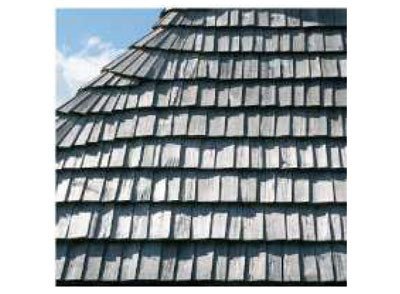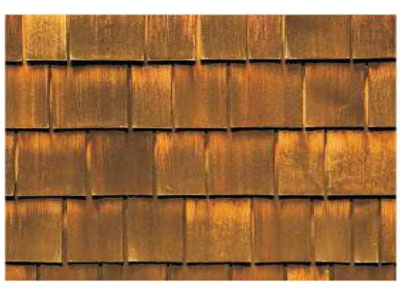By far, the best advice that we can offer regarding coating shakes and shingles is to use whatever your shake and shingle manufacturer or supplier recommends. Often shakes and shingles are pre-treated with a flame retardant or other chemical prior to installation, and it may not be compatible with all types of coating systems.
Shakes and shingles present a different set of dynamics to a coating than logs, siding, decks or dimensional lumber.
First, other than hand-split shakes, they are typically sawn or rough cut, making them quite porous. Second, once installed it is impossible to coat them on all six sides and edges. And third, since they overlap each other, you can’t seal them to prevent water from getting in behind them.
This presents a real challenge to any coating that’s applied after the shakes or shingles have been installed. Since the back and top are impossible to reach with a coating, they remain bare and water absorbent. When water is absorbed, the wood will swell. If a coating has been applied to only the exposed surfaces the outer surface will remain dry and the shake or shingle will have a tendency to cup.
Roofs
We do not approve the use of any of our finishes on roofs of any type, including shakes or shingle roofs. Check with the supplier of your shakes or shingles to find out what they recommend.
Shake or Shingle Siding
If you do want to apply a Lifeline™ coating to shake or shingle vertical siding, the time to start the process is before they are installed - but check with the manufacturer first. You can try brushing a coat of Lifeline stain over the entire shake or shingle, but an easier method may be by dipping them.
Rather than using a stain, our Prelude™ Clear Primer is a good option. Besides adding water repellency to all surfaces, it will prevent over absorption of the pigmented stain and result in better, and more uniform, color generation on rough or porous surfaces.
When the stain or Prelude has dried, the shakes or shingles can be installed. Once in place, they can then be stained and topcoated with a brush or airless sprayer. Back-brushing will also be necessary to get the Lifeline into all of the nooks and crannies.
Just remember – thin coats. You don’t want to flood the surface. Even then, it will still be a challenge avoiding drips and runs when applying Lifeline finishes to shakes or shingles with a brush.
